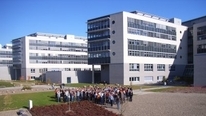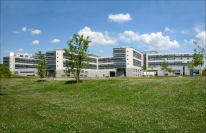Publications
back
Charge density patterns in spin-selectively photoexcited interacting fermions
We describe the formation of charge-density patterns induced by spin-selective photoexcitations of interacting fermionic systems with an underlying magnetic microstructure. Using tensor-network methods for one-dimensional model systems, we find stable charge-density patterns for a wide range of parameters. We discuss a generic mechanism explaining this effect for systems that possess a periodic modulation of local observables in any dimension. Realizations in pump-probe experiments on materials and by experiments with ultracold gases on optical lattices are discussed.
Relaxation of photoexcitations in polaron-induced magnetic microstructures
We investigate the evolution of a photoexcitation in a correlated material over a wide range of time scales from femto- to nanoseconds. The system studied is a one-dimensional model of a manganite with correlated electron, spin, orbital, and lattice degrees of freedom. In a first step, the interaction of light with electrons considering the back-action is treated. Time-dependent matrix product states (MPS) methods are then used for the electronic quantum dynamics of the resulting photoexcitation. The emergence of quasiparticles from a fully correlated excitation is addressed. We study the relaxation of the non-equilibrium quasi-particle distribution with a linearized quantum-Boltzmann equation. Our investigation treats a model-Hamiltonian with parameters extracted from ab-initio calculations of Pr$_{1-x}$Ca$_x$MnO$_3$. This model is restricted to one dimension. The ground state phases for the entire composition range are determined and rationalized by a coarse grained polaron model. A pattern of antiferromagnetically coupled Zener polarons for the half-doped material is identified, which forms the basis for the dynamical calculations discussed above. We discuss the effect of the resulting magnetic microstructure on the relaxation times of the excitation.
Automated construction of $U(1)$-invariant matrix-product operators from graph representations
We present an algorithmic construction scheme for matrix-product-operator (MPO) representations of arbitrary $U(1)$-invariant operators whenever there is an expression of the local structure in terms of a finite-states machine (FSM). Given a set of local operators as building blocks, the method automatizes two major steps when constructing a $U(1)$-invariant MPO representation: (i) the bookkeeping of auxiliary bond-index shifts arising from the application of operators changing the local quantum numbers and (ii) the appearance of phase factors due to particular commutation rules. The automatization is achieved by post-processing the operator strings generated by the FSM. Consequently, MPO representations of various types of $U(1)$-invariant operators can be constructed generically in MPS algorithms reducing the necessity of expensive MPO arithmetics. This is demonstrated by generating arbitrary products of operators in terms of FSM, from which we obtain exact MPO representations for the variance of the Hamiltonian of a $S=1$ Heisenberg chain.
Finite-temperature dynamics and thermal intra-band magnon scattering in Haldane spin-one chains
The antiferromagnetic spin-one chain is considerably one of the most fundamental quantum many-body systems, with symmetry protected topological order in the ground state. Here, we present results for its dynamical spin structure factor at finite temperatures, based on a combination of exact numerical diagonalization, matrix-product-state calculations and quantum Monte Carlo simulations. Open finite chains exhibit a sub-gap band in the thermal spectral functions, indicative of localized edge-states. Moreover, we observe the thermal activation of a distinct low-energy continuum contribution to the spin spectral function with an enhanced spectral weight at low momenta and its upper threshold. This emerging thermal spectral feature of the Haldane spin-one chain is shown to result from intra-band magnon scattering due to the thermal population of the single-magnon branch, which features a large bandwidth-to-gap ratio. These findings are discussed with respect to possible future studies on spin-one chain compounds based on inelastic neutron scattering.


